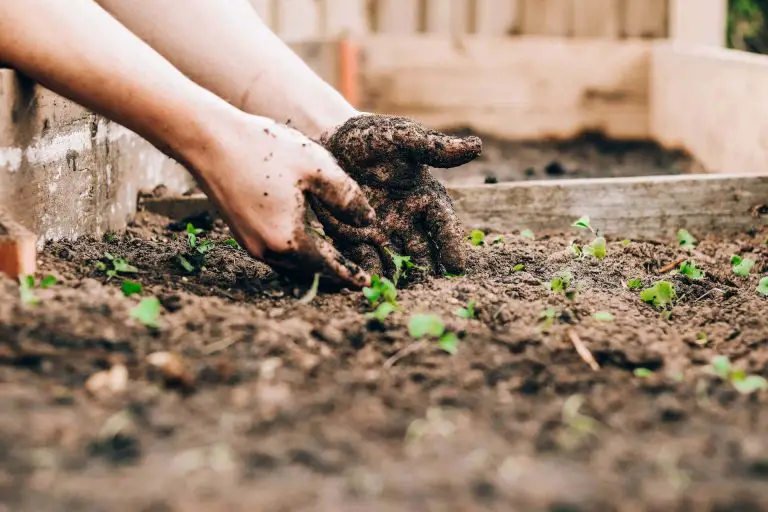Starting A Permaculture Vegetable Garden In 9 Steps!
Looking for a sustainable way to grow your own food? Then starting your own permaculture vegetable garden could be the ideal solution.
Permaculture (derived from permanent agriculture) is a self-sufficient and resilient system to grow abundant food and live in harmony with the environment.
Even though it sounds like a big concept, its principles can be used to build a permaculture vegetable garden whether you have a balcony or acres of land.
Today, our French permaculture enthusiast, Marine Lacoste, will share :
- 9 Steps To Start Your Permaculture Vegetable Garden
- What Do You Need To Get Started?
- The Permaculture Garden Needs
- Where To Do A Permaculture Vegetable Garden?
- What Can You Grow In A Permaculture Vegetable Garden?
- What Is A Permaculture Vegetable Garden?
- How To Choose The Right Garden Bed?
- What About A Permaculture Kitchen Garden?
DISCLOSURE
Some of the links on here are affiliate links and I may earn if you click on them, AT NO EXTRA cost to you. Hope you find the information here useful! Thanks.
Related Articles:
- The Essential Guide to Permaculture Animals
- Best Vegetables To Grow In Raised Beds: 11 Delicious Crops!
- 9 Best Permaculture Plants
- Permaculture Flower Garden – Benefits of an Organic Garden
- Permaculture Gardening for Beginners – How to Get Started
What Is a Permaculture Vegetable Garden?
A permaculture vegetable garden is a garden that sustains itself and is designed around its local environment to produce an abundance of food.
It’s designed to meet the needs of its environment and to restore and preserve soil.
The Seven Layers
If you are starting a food forest or forest garden, you have to remind yourself of the seven layers and the five zones in permaculture to build self-sufficient and resilient biodiversity.
The seven layers:
- Tall Tree Layer or Canopy
- Large Shrub Layer or Sub-Canopy
- Shrub Layer
- Herbaceous Layer
- Creeper Layer or Ground-cover
- Underground Layer
- Climber Layer or Vertical Layer
The five zones:
- Zone 1: the area nearest to the home
- Zone 2: the area still needs maintenance and observation but only every few days or more often if there are animals
- Zone 3: the farming area, field crops, and production area that need little attention and maintenance
- Zone 4: the semi-managed area with wild food, it can be used to pasture animals
- Zone 5: the un-managed and wild area, with no intervention at all
The five zones are to be considered whether you’re in a rural or urban setting, although zone 5 could not be present in an urban habitat.
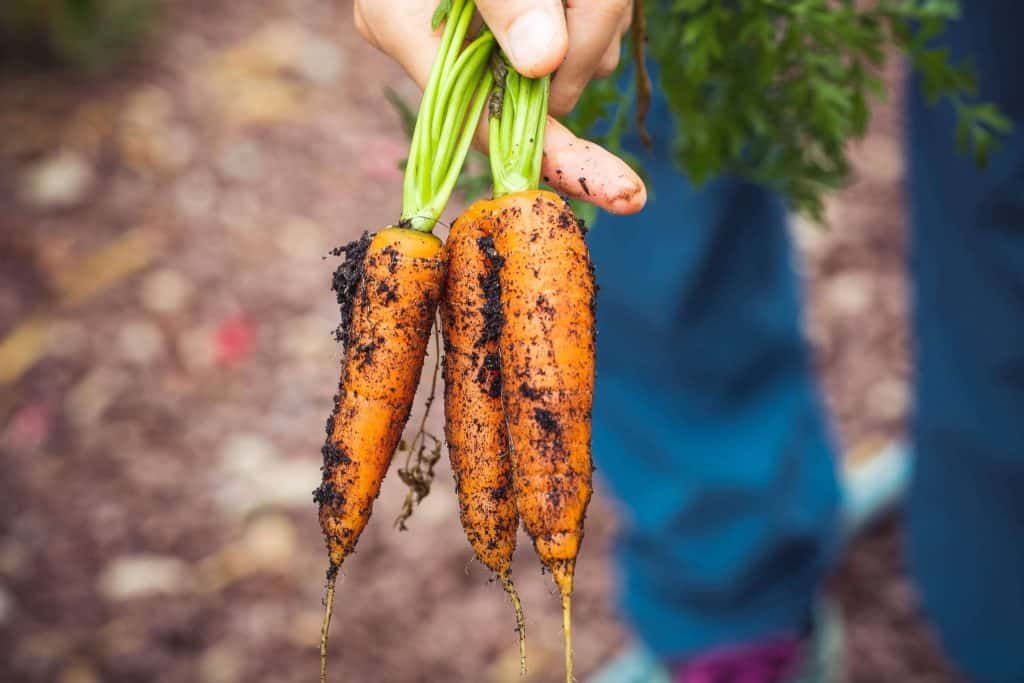
9 Steps to Start Your Permaculture Vegetable Garden
- Choose The Location
Where you’re going to grow your garden is important. But the good news is, a permaculture garden can fit anywhere.
But it’s even better to choose a convenient place close to you. So you’re sure to care for your plants every day.
You need a place with sunlight and water access, those are two main requirements to grow anything.
- Define Your Goal
Before starting anything, analyze your goals and visions.
What garden do you want and need:
- how many people to feed
- set a list of the plants you wish to grow
- set a list of structures you want
- aesthetic
Then analyze your resources:
- time
- budget
- skills and experience
Starting a garden means responsibilities and commitment. You have to be realistic with your resources and goals.
- Observe Your Surroundings
Once you find a place to grow your garden, start by observing your surroundings.
It will help you determine the scale of your project and develop the right design for your environment.
Observe the natural elements and disposition of your surrounding to integrate them into your design later:
- water sources
- soil
- sunlight exposure
- wind exposure
- orientation of the garden
- climate and seasons
- plants already on your land
- proximity to the house
- Choose Plants Based On Your Environment
Include perennials and annuals, find the right combinations with companion planting and guilds. ( Learn more about perennials, annuals, companion planting, and guilds later in the article.)
The right permaculture plants for a vegetable garden would be:
- crops that provide food,
- ones that attract beneficial insects, and
- others that preserve the soil and dig nutrients
Check this seasonal veggie growing guide to start your permaculture vegetable garden.
- Design Your Garden
Use all the information you’ve gathered when observing your land to design your permaculture garden layout.
To design the right permaculture vegetable garden layout you have to consider:
- the climate, the sun and light exposition, and water sources
- the size, shape, length, and width of your garden beds or in-ground bed layout
- the spacing for pathways
Try to maximize the best you can by using plant stacking and applying the notions of seven layers and zones into your design.
Remember, adapt your design to your surroundings, not the other way around.
There is no one design to fit all in permaculture, it’s most likely to be the opposite. There are as many permaculture garden designs as permaculturists!
If you want to know more about permaculture garden design, you can have a look at how to design an edible garden.
Check the How To Choose The Right Garden Bed section to know more about which garden layout is right for your garden.
Use a galvanised raised bed for a longer-lasting bed making it quick and easy to set up!

- Set Up Your Garden Beds
Depending on which garden bed you’ve chosen, you’ll have to build it, buy it, or work your soil.
But in any case, you’ll have to determine how to orient your garden beds according to:
- the sun
- the rain
- the wind
- the slope
- Prepare Your Soil
When starting your garden for the first time you’ll have to preserve or restore the soil.
In any case, avoid chemicals.
If your soil is good you might just need good use of compost and mulch.
But if your soil is bad or damaged you’ll have to rebuild it, meaning improve the soil that is already here.
So you’ll need to learn how to build deep and rich soil for your plants to prosper in their habitat before planting anything.
- Plant Perennials First
Perennials are plants that regrow every year from the same root. Keep reading to find which perennials to plant in your garden.
Once established in the right climate and site they’ll produce abundant and nutritious crops.
Perennials are low maintenance, you don’t need to replant them every year.
Providing long-term and year-round yield, perennials will save you a lot of time and money.
- Plant Annuals
Annuals are plants that can live up to two seasons maximum. You’ll have to replant them. Keep reading to find which annuals to plant in your garden.
Even though annuals won’t last and seem useless, they can be very valuable in a permaculture vegetable garden design.
Place your germinating seeds in a biodegradable kraft box for quick and easy transplants!

What Do You Need to Get Started?
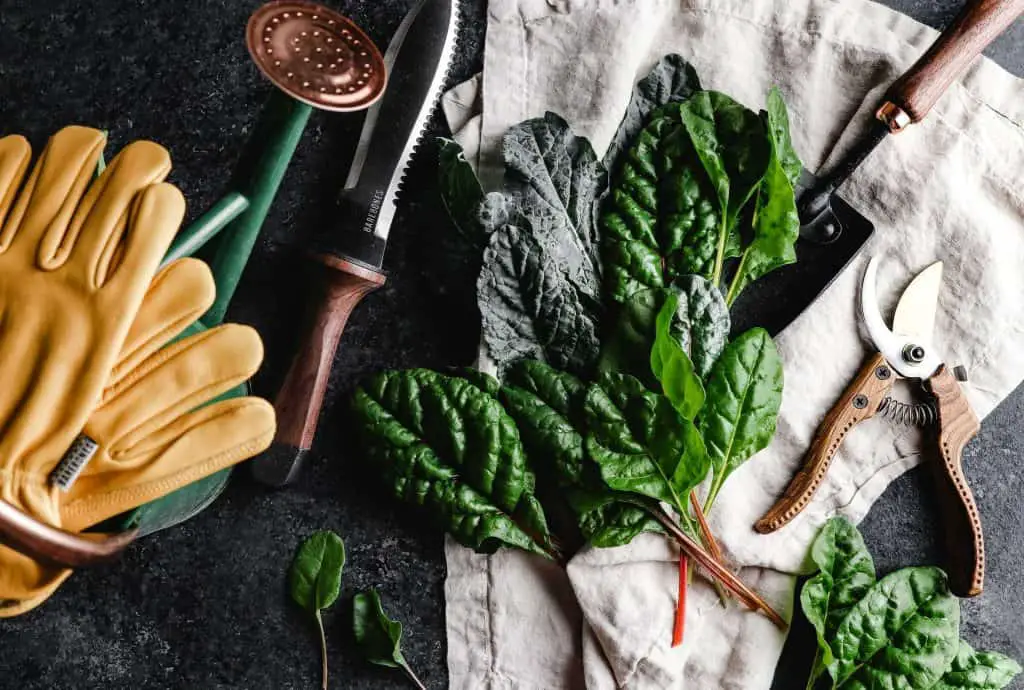
Land
You can easily start a permaculture vegetable garden anywhere, whether it’s urban or rural, small or large-scale land.
- Tools
If you’re starting a small balcony, backyard garden, or even a food forest, it’s most likely that you’ll need only a few essential tools.
It is more about having the right tools that suit your land and job to do than having plenty.
Essential tools to start your permaculture vegetable garden:
Do you want to save some money? Make your work easier with this gardening set.
- A rake
- A spade
- A garden fork
- A hoe
- A trowel
- A pitchfork, for compost
- A pruning saw
- Watering tools
As a safety rule, never use the wrong tool for the job!
- Plants
Once you’ve got land and prepared it you can start planting whether it’s seeds, seedlings, or plants and trees, you’ll have to think about it according to your design.
You can find more about what plants to grow further in the article.
- Motivation and Patience
Motivation and patience are essential when gardening the permaculture way. Don’t expect to harvest veggies and fruits next week, some can take a while to grow.
When planting a tree it could take up to five years before you get your first fruit.
One way to stay motivated and productive is to break down the task of creating one garden into small ones. Like one garden bed at a time. Once you’ve done one just repeat it over and over.
Here is a list of the fastest-growing fruits and veggies to plant in your garden:
- beets
- cucumber
- green beans
- strawberries
- spinach
- tomatoes
- bananas
Permaculture Garden Needs
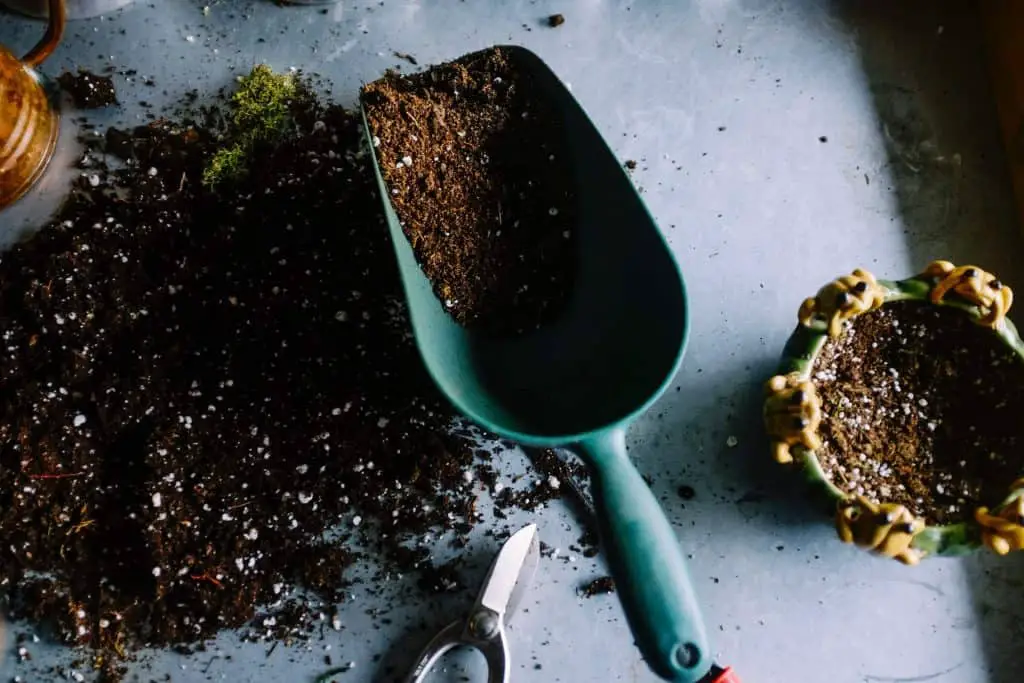
The Soil
To grow healthy veggies you’ll need healthy and rich soil and to preserve or restore your soil there are easy strategies you can use:
Compost
Introducing organic matter is the perfect way to feed your soil with a good nitrogen balance and make it well aerated.
They are different ways to compost and many do’s and don’ts.
You can easily learn how to compost at home.
Mulch is organic material spread over your soil as a cover to protect it from the elements, you can use straw and woody mulch.
It helps to prevent the soil from drying too fast by holding moisture in it. It also protects from wind and is compacted by the rain while feeding it.
Plants
Plants are meant to protect and build soil. Plant roots build soil. Plant foliage protects soil from heavy rain and drying. Once they turn into organic matter or green manure, they also provide mulch.
Water
Watering your plants is beneficial to keep your soil moist and maintain fertility. But always refer to your plants’ needs.
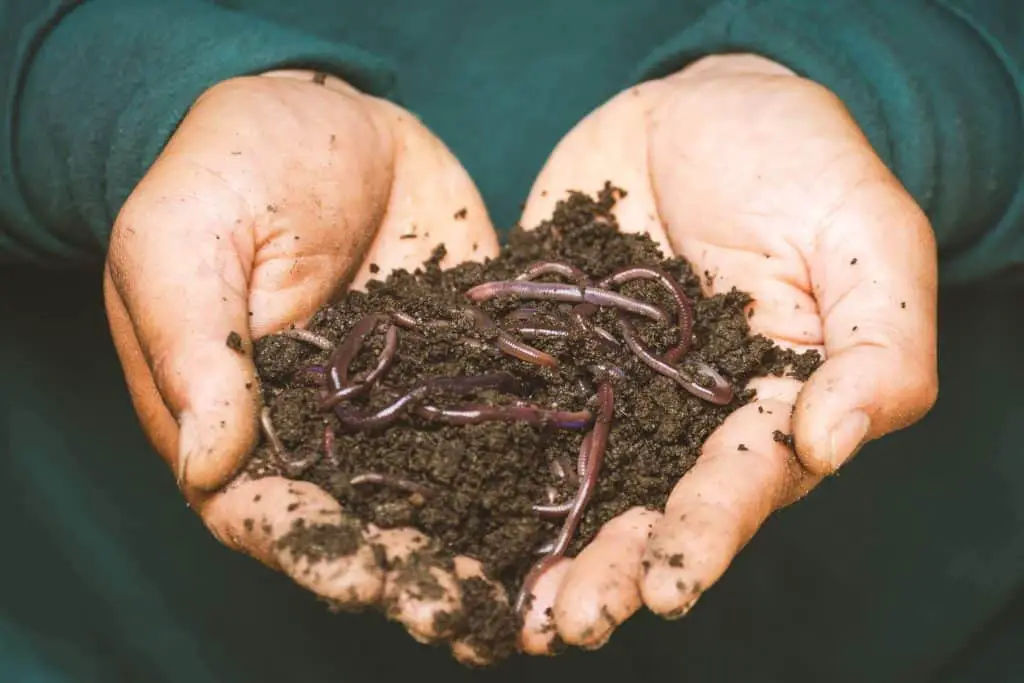
Waste
One important thing when gardening in permaculture is waste and how to manage and make the best use of it.
Compost
Composting is a great way to turn food scraps and natural litter into nutritious and fertile organic matter.
Consider using this garden compost bin to place your food scraps to turn into high-quality compost!

Worms
Worm composting is another way of composting by using worms to decompose food scraps and other biodegradables into compost.
Where to Do a Permaculture Vegetable Garden?
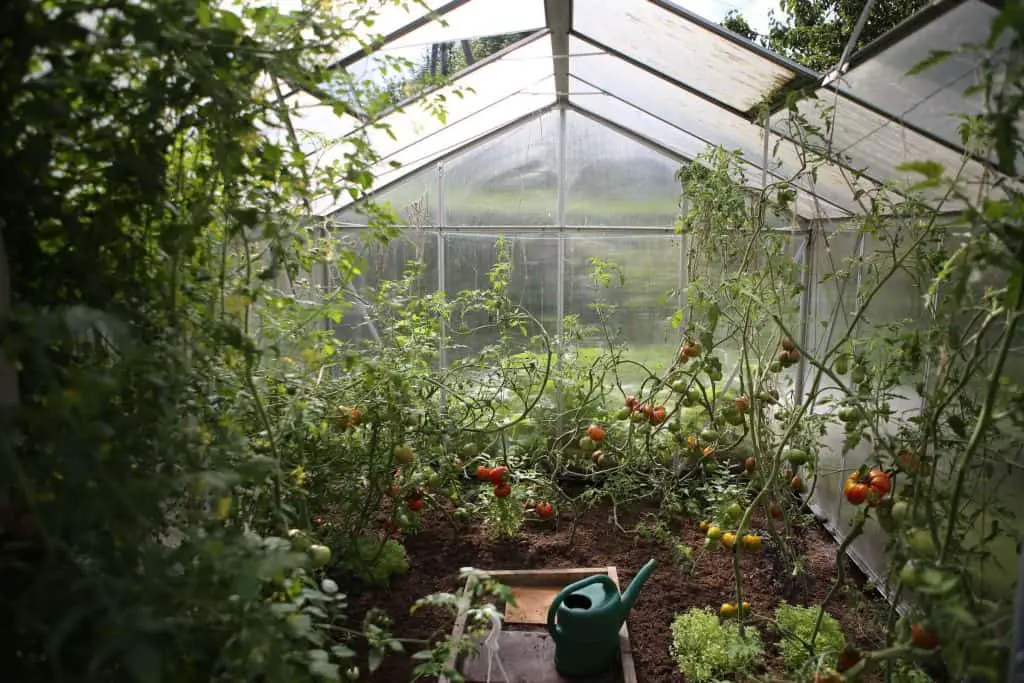
As you read before, you can start your permaculture garden almost anywhere. But it needs observation and the right design.
There are great ideas and tips to help you start your permaculture vegetable garden whether it’s on your balcony or large-scale land.
A Balcony Garden
When starting a permaculture vegetable garden on your balcony, the first thing to do is consult your building’s management and find out about the regulations, if they are.
Then observe your space and look for any vertical design opportunity.
There are plenty of possibilities when it comes to using vertical space such as stackable and hanging pots, ladders, wall gardens, shelves …
Plants for tiny spaces that are perfect to start a balcony garden:
- green leafy vegetables
- herbs
- microgreens
- climbing vegetables
If you’re willing to have fruit trees you can also look for dwarf varieties to keep in pots.
Here is a great example of a balcony garden.
A Backyard Garden
When starting your backyard garden you might ask yourself: pots or ground?
Well, know that there is no wrong answer.
Some plants do well in pots, while you could benefit from plant propagation when they are in the ground.
A good alternative is to use raised beds. They make it easy to plant and harvest and you can control the climate better during fall and spring.
Even though you’re growing a vegetable garden, keep in mind that non-edible herbs and flowers can be important too. They bring beneficial insects such as pollinators and pest predators.
A Food Forest
Food forests follow designs that imitate a forest edge including the seven layers with trees, shrubs, edible plants, herbs, ground covers.
Perennial plants are the foundation of food forests and forest gardens. They require less work and input than annuals. They come back year after year.
Food forests need very little – or none – input from humans. They’re also beneficial to restore and preserve soils, biodiversity, and lands.
A Community and Shared Garden
If you don’t have your own space to grow your permaculture vegetable garden you can always participate in community gardens or exploit rooftops and walls.
What Can You Grow in a Permaculture Vegetable Garden?
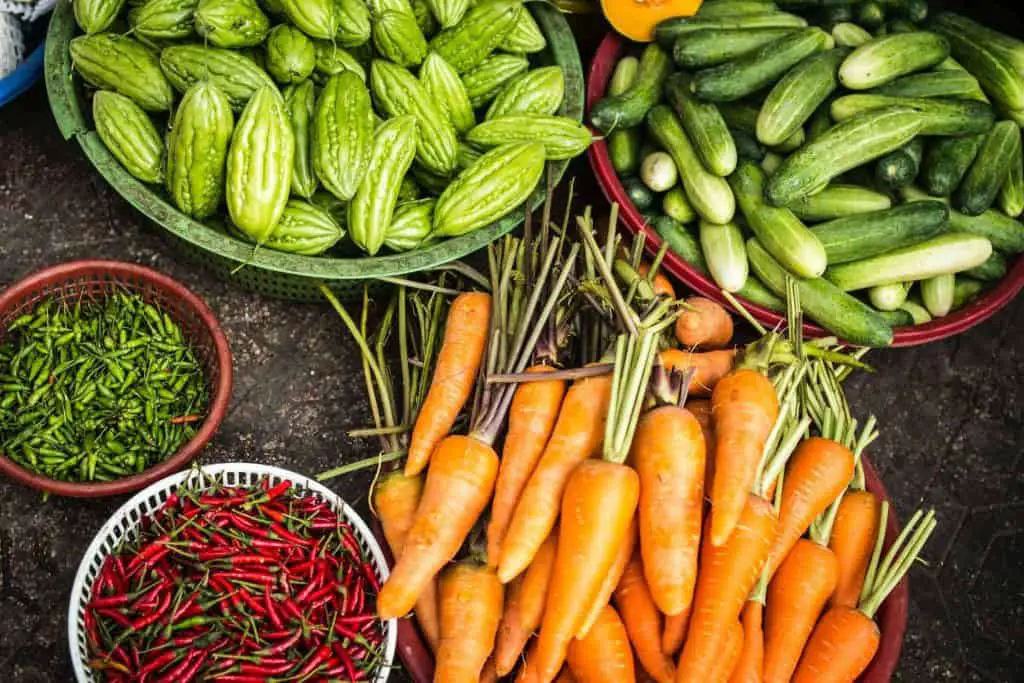
When deciding what to plant in your garden, look for which plants will do best in your surrounding environment.
Perennials And Annuals
The difference between annuals and perennials is that annuals grow only for one season while perennials will regrow every spring.
Perennial plants:
- Berries
- Asparagus
- Kale
- Garlic
- Potatoes
- Basil
- Ginger
And more!
If you want to know more about which perennials you can plant check these perennial vegetables, fruits, herbs, and nuts list.
Annual plants:
- Beans
- Peas
- Watermelon
- Beets
- Cauliflower
- Carrots
- Cucumber
- Lettuce
And more!
If you want to know more about which annuals you can plant check these annual vegetables, herbs, and edibles list.
What about biennials? They are plants that grow for two years.
Companion Planting
Opposite of monoculture, companion planting is reproducing biodiversity.
By mixing plants together you can create combinations of plants that support each other.
It builds sustainable productivity and improves resilience to pests and diseases.
Like attracting pollinators and beneficial predators, and creating a repelling scent to control pests.
Permaculture Guilds
The system of guilds are plants grown in symbiotic relationships so it encourages productivity.
By choosing plants that have compatible growing requirements you can make the best use of the space and protect the soil while improving productivity.
You can either create your own plant guilds or follow systems already known by permaculturists.
Your guild has to follow three requirements in each case:
- attract pollinators or repel pests,
- provide ground cover,
- and draw up nutrients to feed the soil.
The classic guild is called the three sisters and combines corn, beans, and squash.
Easy Permaculture Vegetables
- Garlic
- Squash, such as zucchini
- Pumpkin
- Potatoes
- Chard
Check those easy-growing vegetables for permaculture garden to get started on your own.
How to Choose the Right Garden Bed?
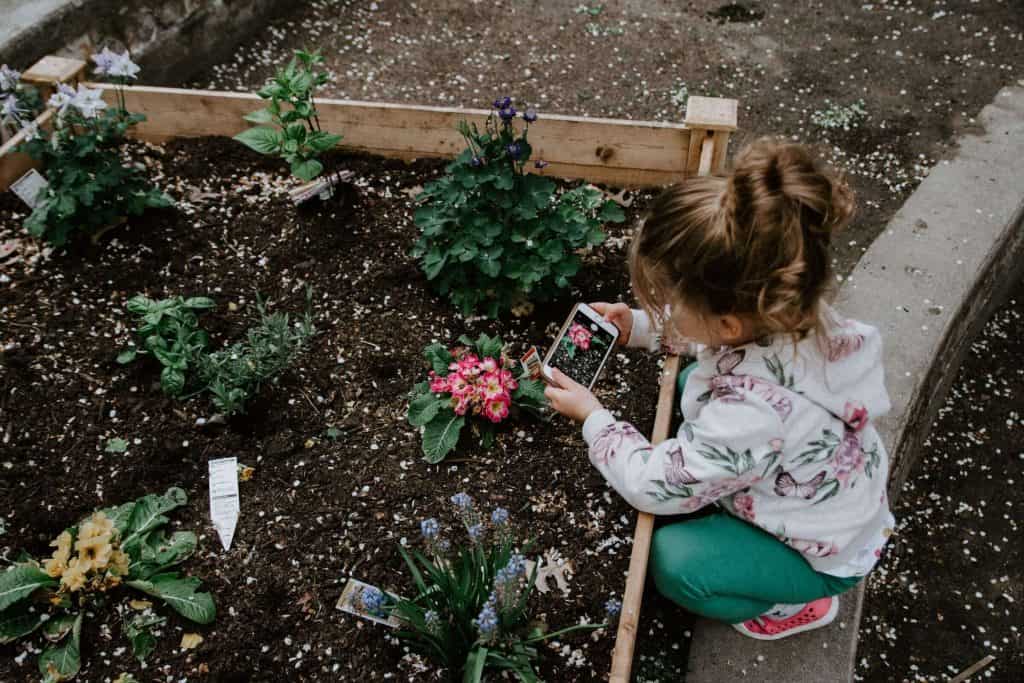
When it comes to permaculture garden layout it can take research before choosing the right one.
So before designing your garden you should decide which garden bed you’ll use for your permaculture vegetable garden.
Choose the garden bed the most appropriate to your environment. There are 5 types of garden beds we will mention below :
- Rows, Alley Cropping, And In-ground Garden Beds
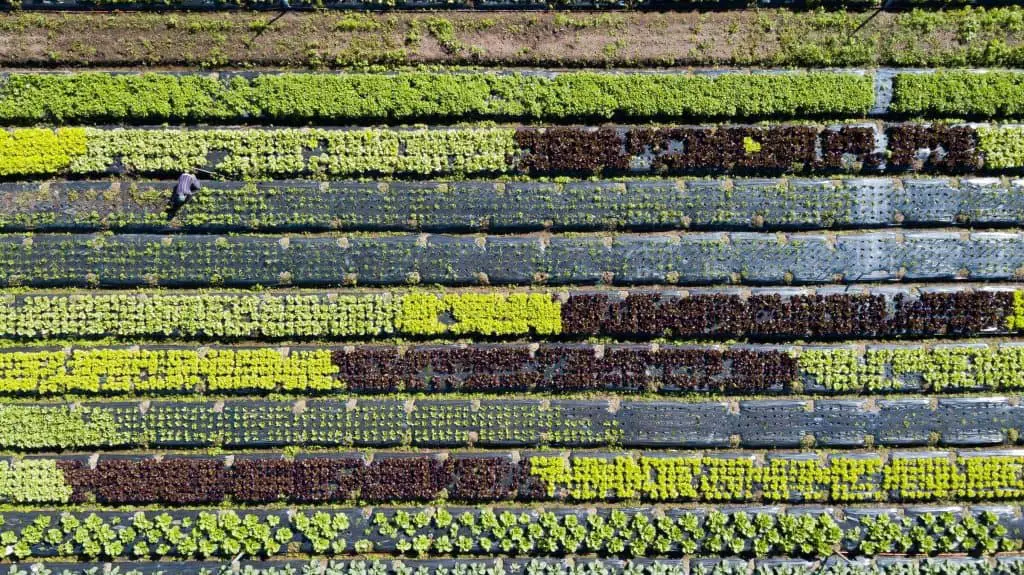
A traditional garden layout is usually designed in rows aligned from north to south.
They’re perfect when it comes to growing annuals and large amounts of veggies, beans, and grains. It is also easy to access.
In-ground garden beds are the cheapest and low-maintenance way to grow veggies. It’s an easy method if your soil is originally good and in a big area.
- Small Containers And Vertical Gardens
Perfect for small spaces and urban areas with limited space such as balconies or small backyards.
It needs more attention for watering and air circulation for plants to prosper well.
It can be stacking pots, hanging pots, plant walls … Vertical planting offers opportunities to be creative in the garden!
- Keyhole Garden Beds
Keyhole garden beds are usually raised beds in a round shape with an opening to access the centre, shaped like a keyhole.
The centre is often used for composting by putting a basket in it to collect kitchen scraps. You water the centre to disperse the nutrients from the compost and water the plants at the same time.
It maximizes bed space, can be combined with a composting system and provides easy access when built as a raised bed.
It can also be wrapped around a tree instead of a compost system.
- Raised Garden Beds

A raised garden bed is an elevated garden bed out of the ground. You can build it from scratch or buy a ready-made one.
It has many benefits such as increasing productivity and improving soil conditions. It provides efficient irrigation and improved drainage.
It can also be a great barrier to pests and weeds.
In certain climates, it can be used to protect soil from heavy rain or protect plants from “drowning” in a rainy area. They warm up faster during spring, a plus in cold climates.
It makes the garden easy to access and back-pain free. Can be built to your needs and is very appreciated if you are using a wheelchair and or having reduced motricity.
It’s also a great solution when having poor soil.
When thinking of setting up raised garden bed you should consider:
- its size
- where to put it
- your irrigation system
- your soil
- material that lasts and is safe
- Hugelkultur And Lasagna Gardens
Hugelkultur and Lasagna gardens are no-dig gardens.
Hugelkultur or Hugelbeds are no-dig raised garden beds that are filled with hardwood, softwood and branches.
It requires a lot of time and effort to set it up but provides amazing benefits in the long term such as great fertilization through the years.
Lasagna bed, also known as sheet mulching or sheet composting, is a no-dig method to build organic and rich soil by adding alternate layers of organic matter to your soil.
Build rich soil by adding high-quality vermicompost worm castings!

If you are lacking some time and looking for a no-dig gardening method, check out what lazy beds are and how to make them.
What About a Permaculture Kitchen Garden?
Growing a permaculture kitchen garden is becoming very popular but a lot of people wonder what it is and how it’s different from a permaculture vegetable garden.
Usually smaller and closer to your kitchen than a vegetable garden, a kitchen garden is meant to be used daily.
A kitchen garden is perfect for someone:
- trying gardening for the first time
- who cooks everyday meals with fresh herbs
- who doesn’t have time and space to care for a big garden
A kitchen garden is perfect to grow:
- culinary and medicinal herbs
- edible flowers
- greens
- from food scraps
Resources
More tips and useful information on getting started growing veggies.
More tips and useful information on balcony gardening.
More tips and useful information on designing a forest garden.
So Are You Ready to Get Started?
You got everything you need to know to start your permaculture vegetable garden. Motivation, patience, good soil, and the right design are the essential tools for your garden to prosper.
We would love to hear from you and see your beautiful project! Let us know what you grow and how! And maybe you have some tips to share with us all.
Related Posts :


![How To Harvest Kale Without Killing The Plant [What to Avoid!] 2023](https://aboveandbeyondgardening.com/wp-content/uploads/2022/10/how-to-harvest-kale-without-killing-the-plant-1-768x512.jpg)
![When To Pick Carrots [+ Harvesting Tips!]](https://aboveandbeyondgardening.com/wp-content/uploads/2021/10/When-To-Pick-Carrots-768x512.jpg)
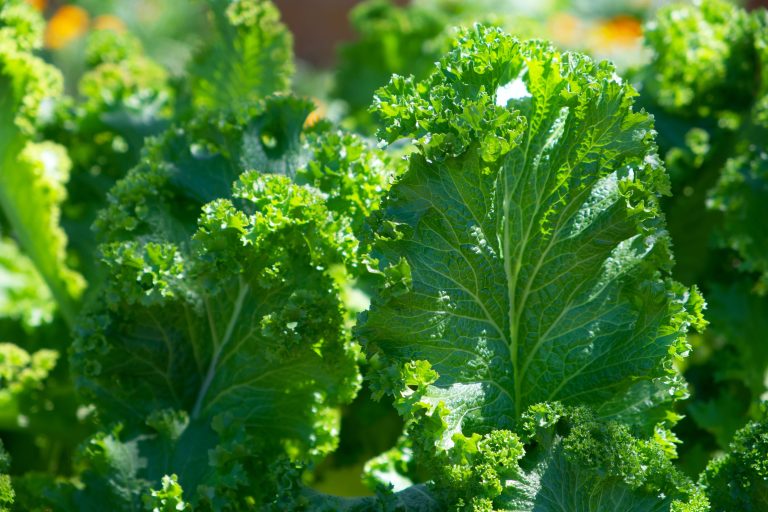
![23 Companion Plants For Sage & What To Avoid! [2023]](https://aboveandbeyondgardening.com/wp-content/uploads/2022/10/companion-plants-for-sage-15-768x512.jpg)

